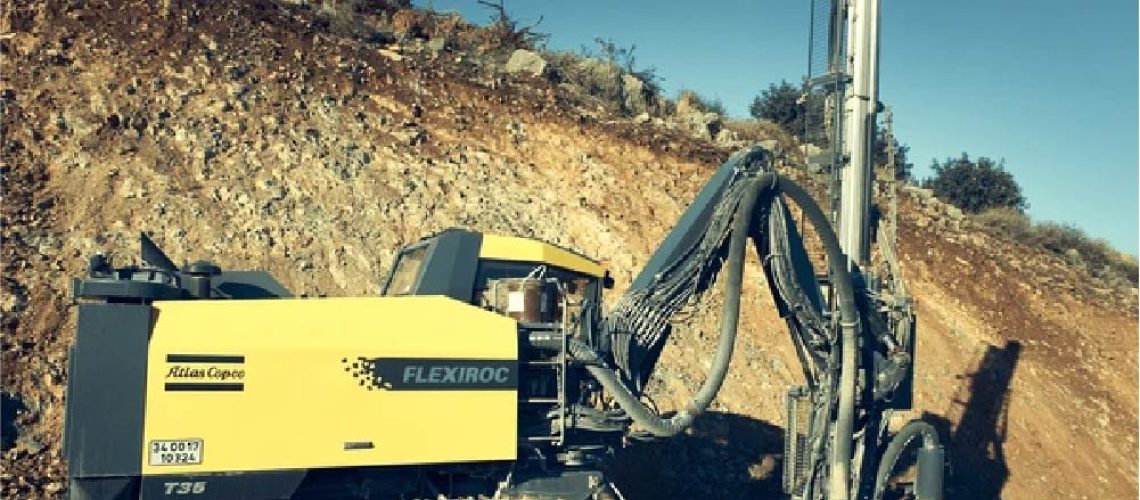In the world of engineering and industry, drilling is a crucial process that plays a major role across various sectors. Drilling is not merely about creating holes in the ground—it is an art and science that combines advanced techniques, modern technology, and meticulous planning. With the rapid advancement of technology and industry, the need for natural resources is growing.
Drilling has become one of the main methods for exploring and utilizing these resources, whether it be oil, gas, or minerals. A precise and safe drilling process not only supports smooth industrial operations but also is essential for environmental preservation. This in-depth discussion on the drilling process is intended to provide both professionals and the general public with a better understanding of modern drilling.
Definition of Drilling
What is Drilling?
Drilling is the process of creating a hole in the Earth’s surface or other materials using specialized equipment known as a drilling rig. This process is carried out to reach subsurface layers in order to extract natural resources or for the purpose of constructing infrastructure. Essentially, drilling combines mechanics, geology, and material technology to produce a stable and safe borehole.
Basic Concept of Drilling
Simply put, drilling involves cutting or grinding away material using rotating tools, supported by lubrication or cooling systems. This process must be executed with extreme care, as even a small mistake can have significant consequences in terms of safety and operational efficiency. Imagine digging a small hole in a garden, but on a much larger and more complex scale!
Types of Drilling Methods
Drilling employs various methods tailored to the conditions and objectives of the operation. The appropriate method greatly determines the success and efficiency of the process.
Vertical Drilling
Vertical drilling is the most common method used to directly reach deep subsurface layers. This method is frequently used in the oil and gas industry.
Advantages and Disadvantages of Vertical Drilling
Advantages include ease of execution and the use of relatively standard equipment. However, this method has limitations, especially when trying to access complex or horizontally distributed geological formations.
Horizontal Drilling
Horizontal drilling is increasingly popular due to its ability to access a larger area from a single drilling point.
Applications and Benefits of Horizontal Drilling
In the oil and gas industry, horizontal drilling allows greater access to dispersed reservoirs, thus boosting production. It also reduces the number of required drilling sites, thereby lessening the overall environmental impact.
Inclined Drilling
In addition to vertical and horizontal methods, inclined drilling is a technique used to adjust the drilling direction according to field conditions.
Techniques and Advantages of Inclined Drilling
Inclined drilling combines the benefits of both previous methods, offering flexibility in adjusting the drilling angle. This is especially useful when the target resource is located beneath the surface at a specific tilt.
Drilling Technology and Equipment
To achieve optimal results, the use of modern technology and equipment is key in the drilling process.
Modern Drilling Rigs and Equipment
Modern drilling rigs are equipped with advanced features such as digital sensors, automatic control systems, and pressure monitoring devices.
Main Features of Modern Drilling Equipment
Key features include:
- Pressure and speed sensors to regulate the drilling process in real time.
- Cooling systems to prevent the equipment from overheating.
- GPS and navigation technology to ensure precise positioning and drilling direction.
Comparison of Various Drilling Tools
Comparing traditional and modern drilling equipment shows significant improvements in speed, efficiency, and safety. Modern technology allows operators to control the process with greater precision, minimizing on-site accidents.
Latest Technological Innovations in Drilling
Technological innovations continue to push the limits of drilling capability. Currently, automation and digitalization are transforming the drilling industry.
Automation and Digitalization
With automation, the drilling process can be operated with minimal supervision, enabling operators to focus on strategic decision-making. Digitalization also aids in collecting accurate data for in-depth analysis and better planning.
Impact of Automation on Drilling Efficiency
Automation significantly enhances operational efficiency. Through automatic controls, human error is minimized, resulting in faster drilling processes and more consistent outcomes.
Drilling Process: Step by Step
Drilling does not occur instantaneously; each stage plays a critical role and must be executed carefully.
Drilling Site Preparation
Before drilling begins, thorough site preparation is crucial. Selecting an appropriate location based on geological studies can prevent problems later on.
Geological Studies and Site Analysis
Geological studies help engineers understand the soil structure and rock formations. This analysis includes subsurface mapping, pressure measurements, and the identification of potential hazards such as water or toxic gas layers. Such data is vital for safe and efficient drilling.
Drilling Execution Stage
After careful site preparation, the actual drilling process commences. This stage involves a series of technical procedures that must be performed sequentially.
Drilling Techniques Used
During drilling, operators use specific techniques to penetrate soil and rock layers. Techniques vary depending on the type of formation encountered. For instance, in oil and gas drilling, rotary drilling combines rotational movement and hydraulic pressure to reach the reservoir.
Managing Pressure and Borehole Stability
One major challenge in drilling is maintaining borehole stability. Pressure management is achieved by using drilling mud and cooling fluids that reduce friction and cool the equipment. Advanced technology allows for real-time pressure monitoring, quickly anticipating risks such as blowouts.
Post-Drilling Stage
Once drilling is complete, the post-drilling phase is critical for optimizing results and minimizing environmental impact.
Processing Drilling Results
The extracted resources—such as oil, gas, or minerals—must be carefully processed to ensure their quality and purity. This involves separation, filtration, and further refining according to industry standards.
Site Reclamation and Rehabilitation
Equally important is the reclamation of the drilling site, restoring the environment to its original state. Rehabilitation includes replanting vegetation, cleaning up waste, and continuous monitoring to minimize environmental impacts.
Conclusion
Drilling is a crucial foundation in resource extraction and infrastructure development. By integrating principles of mechanics, geology, and materials technology, drilling not only produces stable and safe boreholes but also efficiently supports the exploration of oil, gas, and minerals. Modern technologies—such as digital sensors, automatic control systems, and automation—have enhanced operational speed, precision, and safety while reducing accident risks and environmental impact. Through meticulous planning, controlled execution, and effective post-drilling management, the drilling process becomes key to meeting industrial demands while maintaining environmental balance.



